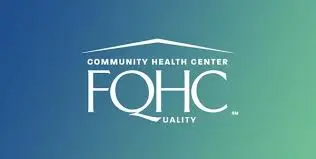Introduction: Starting July 2025, the Centers for Medicare and Medicaid Services (CMS) will discontinue the use of the bundled G0511 code for care management services. This significant policy shift requires Federally Qualified Health Centers (FQHCs) and Rural Health Clinics (RHCs) to adopt individual CPT codes for Chronic Care Management (CCM) and Remote Patient Monitoring (RPM). The implications for your clinic could be substantial—both operationally and financially. Yet, many practices remain unaware or underprepared for this crucial transition.
This article outlines the strategies FQHCs and RHCs need to navigate these changes effectively, ensuring a seamless transition and positioning your practice to thrive financially and clinically in a value-based healthcare environment.
Understanding the Shift from G0511: G0511 was designed to simplify billing by bundling various care management services under a single code, allowing clinics to focus more on patient care rather than on administrative billing complexities. The impending shift to individual CPT codes changes this landscape dramatically, requiring a more detailed approach to documentation, coding, and billing.
Transitioning from a bundled payment structure to individual CPT coding means clinics must track time and services with increased precision. While this could initially appear burdensome, proper implementation of new coding practices offers the potential for increased revenue and more accurate compensation for the extensive care provided to patients with chronic conditions.
Why This Change Matters for Your Clinic: The shift to individual CPT codes provides opportunities for more detailed billing and increased reimbursement for specific services that were previously undervalued under the bundled G0511 model. Practices that prepare effectively can leverage this change to maximize reimbursement, improve compliance, and enhance overall operational efficiency.
However, those unprepared risk significant disruptions to cash flow, potential compliance issues, and missed opportunities for revenue capture. Early and strategic planning will be crucial in mitigating these risks.
Strategic Recommendations for a Smooth Transition: To successfully navigate this important change, FQHCs and RHCs must adopt a proactive approach. Here are strategic recommendations to ensure a seamless transition:
Step 1: Detailed Understanding and Training
Begin by thoroughly educating your staff about the new coding requirements. This includes administrative personnel, billing specialists, and clinical staff. Education should cover:
- Specific CPT code definitions and documentation requirements.
- Proper time-tracking methods and the importance of accurate, detailed patient notes.
- Compliance protocols to avoid billing errors and potential audits.
Training should not be a one-time event; schedule regular training refreshers and updates as CMS policies and practices evolve.
Step 2: Enhanced Documentation Protocols
With individual CPT coding, meticulous documentation becomes even more critical. Develop standardized documentation protocols across your clinic to ensure all patient interactions, services provided, and time spent are accurately recorded. Consider electronic health records (EHR) systems with built-in coding prompts to streamline this process and reduce errors.
Step 3: Integration of RPM
Remote Patient Monitoring (RPM) presents a substantial opportunity for increased revenue and improved patient care. RPM allows continuous monitoring of patients’ chronic conditions outside the clinical setting, enhancing care quality and reducing emergency interventions.
- Select robust RPM technologies that seamlessly integrate with your existing EHR and billing systems.
- Train clinical staff in RPM device use and data interpretation to ensure effective implementation.
- Develop clear workflows for RPM data collection, analysis, and integration into patient care plans.
Step 4: Leveraging Technology for Efficiency
Technology solutions can significantly ease the transition to individual CPT codes. Invest in systems that:
- Automate coding suggestions based on documented clinical notes.
- Provide real-time analytics and billing insights to identify areas of underbilling or potential compliance risks.
- Facilitate clear communication among clinical, administrative, and billing teams.
Step 5: Regular Audits and Feedback
Conduct regular internal audits to identify any issues early, ensuring compliance with new coding practices. Utilize feedback from these audits to refine documentation practices and address training gaps immediately.
Regular feedback loops and continuous improvement initiatives will help your practice quickly adapt and thrive under the new CMS guidelines.
Financial and Clinical Benefits: Adopting individual CPT codes, despite initial implementation challenges, offers several notable benefits:
- Improved Revenue Capture: More precise billing can enhance reimbursement rates significantly.
- Enhanced Clinical Outcomes: Increased emphasis on detailed patient monitoring and care management results in better patient health outcomes.
- Better Compliance: Detailed documentation and precise billing reduce compliance risks and audit vulnerabilities.
Why Partner with iScript.care? iScript.care specializes in supporting FQHCs and RHCs through complex transitions like this. Our comprehensive platform offers solutions for CCM and RPM integration, detailed documentation support, and coding automation, all designed to simplify your operational shift and maximize revenue.
With iScript.care, your practice gains access to:
- User-friendly RPM integration and continuous patient monitoring systems.
- Advanced analytics for billing and operational efficiency.
- Ongoing training resources tailored specifically for FQHCs and RHCs.
We are committed to helping your clinic not only navigate this important transition but to thrive by leveraging it as an opportunity for growth and enhanced patient care.
Conclusion: The upcoming CMS transition from G0511 to individual CPT coding for CCM and RPM is a significant change for FQHCs and RHCs. However, with strategic planning, effective staff training, robust technology solutions, and ongoing support, your practice can transform this challenge into a powerful opportunity.
Embrace the change proactively with iScript.care, and ensure your clinic’s financial stability, compliance, and enhanced patient outcomes for years to come.

No responses yet